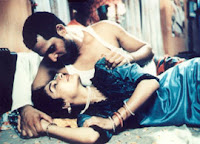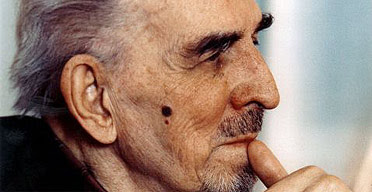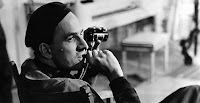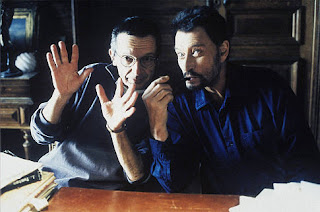If We Don't Tell Our Own Stories, Nobody Else Will

Salaam Bombay! - A Film by Mira Nair
Nominated for Oscar | Won 25 International awards
35 mm | Color | 113 minutes | 1988
Hindi with English Subtitles
Venue : Ashwin Hospital Auditorium , Ganapathy , Coimbatore
5th August 2007 , Sunday at 5.45 pm.
The history of the making of Mira Nair’s "Salaam Bombay!" is almost as interesting as the film itself. The filmmakers gathered a group of the street children of Bombay and talked with them about their experiences, visiting the streets and train stations, bazaars and red-light districts where many of them lived. Out of these interviews emerged a screenplay that was a composite of several lives. Then many of the children were enlisted for weeks in a daily workshop, not to teach them "acting" (for that they already knew from hundreds of overacted Indian film melodramas), but to teach them how to behave naturally in front of the camera. Out of those workshops a cast gradually emerged. Shooting on actual locations in Bombay, director Mira Nair has been able to make a film that has the everyday, unforced reality of documentary, and yet the emotional power of great drama.
Click here to watch video clips from 'Salaam Bombay'
Chaipau is an in telligent boy, stubborn and wily, and he finds a job as a runner for a man who runs a tea stall in the street. Chaipau's job is to race up flights of tenement stairs with trays of tea, and in the tenements he finds a world of poverty, sweatshops, prostitution and drug dealing. One of the friends he makes is a pathetic 16-year-old girl who was sold or kidnapped away from her native village, and is being held captive by a rapacious madam who plans to sell her virginity to the highest bidder. The other characters in the neighborhood include a hopeless drunk and addict, who befriends the children as best he can.
telligent boy, stubborn and wily, and he finds a job as a runner for a man who runs a tea stall in the street. Chaipau's job is to race up flights of tenement stairs with trays of tea, and in the tenements he finds a world of poverty, sweatshops, prostitution and drug dealing. One of the friends he makes is a pathetic 16-year-old girl who was sold or kidnapped away from her native village, and is being held captive by a rapacious madam who plans to sell her virginity to the highest bidder. The other characters in the neighborhood include a hopeless drunk and addict, who befriends the children as best he can.
One of the subplots of the film involves the relationship between a drug dealer and the prostitute who is h is common-law wife. She lives for her child, and exists in daily fear that the child will be taken from her because of the life she leads. Nair treats this woman with such sensitivity that we feel great sympathy for her when the child is threatened, and this illustrates one of the underlying beliefs of "Salaam Bombay!": That the street life, however hard, is preferable to what happens to people once they are identified by the law and become the victims of official institutions.
is common-law wife. She lives for her child, and exists in daily fear that the child will be taken from her because of the life she leads. Nair treats this woman with such sensitivity that we feel great sympathy for her when the child is threatened, and this illustrates one of the underlying beliefs of "Salaam Bombay!": That the street life, however hard, is preferable to what happens to people once they are identified by the law and become the victims of official institutions.
It is remarkable how well Nair creates this street world and tells us its rules without seeming to force her story. One of her secrets is location shooting; not a single scene in this movie was shot on a set or in a studio, and some of the scenes - including a funeral procession - were shot with hidden cameras, to capture the unrehearsed behavior of the spectators.Courtesy - RogerEbert.Com
Mira Nair

Mira Nair loves to tell a good story, no matter what the genre. From the gritty urban realism of her debut feature, Salaam Bombay!, to the gilded world of 19th-century England in Vanity Fair and the intricacies of romance, love, and family in her smash hit, Monsoon Wedding, she's a director who has continually defied easy categorization.
Accomplished Film Director/Writer/Producer Mira Nair was born in Bhubaneswar, India in 1957. Educated at both Delhi University and Harvard University, Nair began her artistic career as an actor before turning her attention to film. She found incipient success as a documentary filmmaker, winning awards for ' So Far From India ' and ' India Cabaret' . In 1988, Nair’s debut feature, Salaam Bombay!, was nominated for an Academy Award, Golden Globe, and BAFTA Award for Best Foreign Language Film. It also won the Camera D'Or (for best first feature) and the Prix du Publique (for most popular entry) at the Cannes Film Festival as well as 25 other international awards.
Nair’s next film, Mississippi Masala, an interracial love story set in the American South and Uganda, starring Denzel Washington and Sarita Choudhury, won three awards at the Venice Film Festival including Best Screenplay and The Audience Choice Award. Subsequent films include The Perez Family (with Marisa Tomei, Anjelica Huston, Alfred Molina and Chazz Palminteri), about an exiled Cuban family in Miami; and the sensuous Kama Sutra: A Tale of Love, which she directed and co-wrote.
Nair directed My Own Country based on Dr. Abraham Verghese's best-selling memoir about a young immigrant doctor dealing with the AIDS epidemic. Made in 1998, My Own Country starred Naveen Andrews, Glenne Headly, Marisa Tomei, Swoosie Kurtz, and Hal Holbrook, and was awarded the NAACP award for best fiction feature.
Nair returned to the documentary form in August1999 with The Laughing Club of India, which was awarded The Special Jury Prize in the Festival International de Programmes Audiovisuels 2000.
In the summer of 2000, Nair shot Monsoon Wedding in 30 days, a story of a Punjabi wedding starring Naseeruddin Shah and an ensemble of Indian actors. The film opened to tremendous critical acclaim and commercial success and went on to win the Golden Lion at the 2001 Venice Film Festival and receive Golden Globe and BAFTA nominations for Best Foreign Language Film.
Nair’s next film, Hysterical Blindness, gave HBO its highest original film ratings in three years. Set in working class New Jersey in 1987, the film stars Uma Thurman, Juliette Lewis, Gena Rowlands, and Ben Gazarra. Over 15 million viewers watched Blindness on HBO and critics recognized the film with a Golden Globe for Uma Thurman and three Emmy Awards (including Best Supporting Actress for Rowlands and Best Supporting Actor for Gazarra).
Following the tragic events of September 11, 2001, Nair joined a group of 11 renowned filmmakers, each commissioned to direct a film that was 11 minutes, 9 seconds and one frame long. In 2003, Nair produced “Still the Children Are Here,” an intimate documentary by Dinaz Stafford about the Garo peoples of Meghalaya, India.
In May 2003, Nair directed the Focus Features production of the William Thackeray classic, Vanity Fair, a provocative period tale set in Georgian England, filmed entirely on location in the UK and India. Nair was appointed as the mentor in film by the prestigious Rolex Protégé Arts Initiative, joining fellow mentors Jessye Norman, Sir Peter Hall, David Hockney, Mario Vargas Llosa, and Saburo Teshigawara to help guide young artists in critical stages of their development.Mira Nair has so far directed 18 features which include documentaries.
Nair currently lives in New York City with her husband and son.
Courtesy:MirabaiFilms.Com







